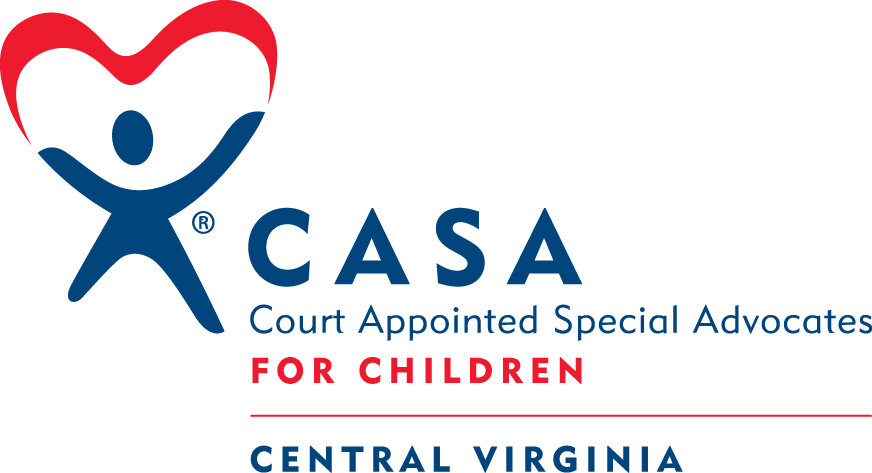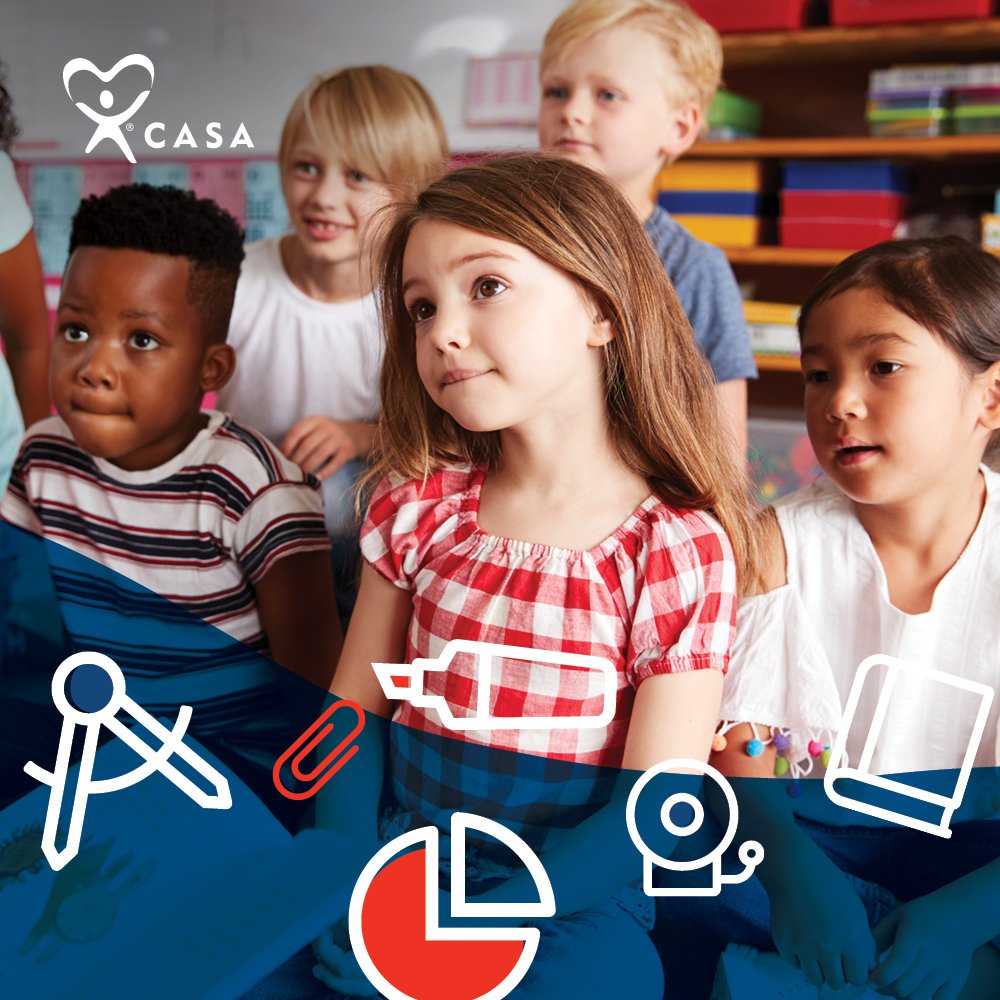Back to School - Protective Factors for our CASA Kids
Back to school can be an exciting time for kids but it can also cause anxiety, fear, and stress. Our CASA kids are especially at risk. Here’s why:
School Changes
Children placed in foster care are not always able to stay in their current school. If a child is removed from their home in Bedford County, for example, the only available foster home may be in Roanoke. That child will likely have to attend a Roanoke City or County school. Every time that child is moved to a new foster home, they may potentially have to change schools. These changes mean new teachers, new friends, new bus drivers…new everything. The stress of these changes can make it difficult for kids to focus and learn and it may lead to worsening behaviors.
Trauma
The reason children are placed in foster care is because they have experienced abuse or neglect. This trauma can impact a child’s brain and make learning difficult. Adverse Childhood Experiences, or ACEs, are traumatic events that happen in childhood. They can include things like having a parent who is incarcerated, witnessing domestic violence, experiencing any type of abuse, or having a parent who is addicted to drugs or alcohol. Take the quiz here to find out your own ACE score. The CDC states, “Toxic stress from ACEs can change brain development and affect how the body responds to stress.”
So, what can we do to help our kids have a successful year at school? There are two basic protective factors we can use to help our kids thrive:
School Connectedness
When students believe that the teachers and staff at their school genuinely care about them and their learning, they will do better in school. According to the CDC, “Research has shown that young people who feel connected to their school are less likely to engage in many risk behaviors, including early sexual initiation, alcohol, tobacco, and other drug use, and violence and gang involvement. Students who feel connected to their school are also more likely to have better academic achievement, including higher grades and test scores, have better school attendance, and stay in school longer.” They also offer helpful resources for school administrators, teachers and staff, and parents and caregivers here.
Positive Relationships
This is where our advocacy at CASA comes into play. When CASA volunteers are appointed by a judge, they get to know the child and talk to family members and other adults in the child's life to find out what they need to heal and thrive. CASA volunteers advocate for stability with respect to a child’s living situation and school placement, with the child’s best interest in mind. CASA volunteers interact and build relationships with everyone in the child’s environment who has a hand in their education—parents and foster parents, teachers, school counselors, social workers, attorneys, therapists, mentors, and others. CASA volunteers are often the one consistent person in their foster care journey. Our volunteers remain in frequent contact with teachers and school administrators to form a partnership to better understand the child’s unique strengths and challenges. These interactions with the child’s school, combined with the volunteer’s relationship with the child, empower the CASA volunteer to advocate in court for what the child needs to thrive academically. If a child is receiving tiered response to intervention, special education or 504-related services, our volunteers can attend school meetings and recommend strategies that support the child’s success in school such as tutoring, therapies, assistive technology and other accommodations. They can also advocate for placement stability, knowing that frequent school transfers can cause a child to fall behind.
Children with a CASA volunteer have better outcomes, especially at school.
According to an NIH article, a child with a CASA volunteer is more likely to have better outcomes: children performed better academically and behaviorally in school as measured by whether or not they passed all of their courses, whether or not they were expelled and their conduct performance. Children and youth assigned a CASA volunteer reported significantly higher levels of hope. A child’s hope has been linked to numerous positive outcomes such as academic success, overall wellbeing, increases in self-control, positive social relationships and optimism 1. For children in the foster care system, pursuing childhood activities can be a challenge because of frequent moves, resource challenges or shame. Our volunteers make sure the court knows when a child has special interests and help remove barriers so the child can participate in extracurricular activities.
For a list of resources to help children and teens, check out this blog post from the Well Being Trust. They include:
· The American Academy of Child & Adolescent Psychiatry – View family and youth resources.
· Active Minds – View mental health resources and education for students.
· NAMI – View resources for kids, teens and young adults.
· National Institute of Mental Health – View digital resources on child and adolescent mental health.
· Teen Line – Learn more about teen listeners who provide support, resources and hope to any teen who is struggling.
· The Jed Foundation – Learn more about protecting emotional health and suicide prevention.
· Youthline – Learn more about this teen-to-teen youth crisis and support service.
· The Trevor Project – Learn more about LGBTQ youth suicide prevention & crisis intervention.
· Work2BeWell – View free resources for parents, teens, and educators, clinically vetted curriculum, and learn more about a movement to reduce stigma and amplify teen voices within mental health.
______________________________
1. Stanley, Jessica, and Chan M. Hellman. Nurturing Hope among Children Experiencing Abuse & Neglect: Examining the Effects of CASA Volunteers. 2019.




